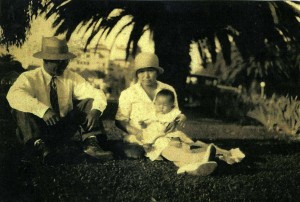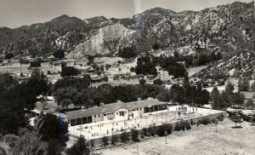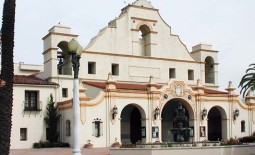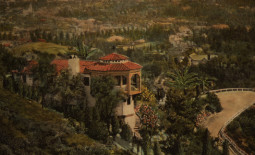Waves from Japan
The gargantuan earthquake that unleashed on March 11 under the Pacific Ocean just off the coast of northern Japan was so powerful that it shifted the axis of the earth and caused the planet to spin faster; it moved the entire island nation eight feet to the east. What this event did to the nation of Japan was nothing less than catastrophic and tragic: towering tsunamis thundered onto the coastal plain and swept into inlets, and whole towns, fishing villages and their people and animals – their lives – were snuffed out in moments. Entire extended families and their centuries of traditions, stories and histories abruptly ended for all time. Japan’s northern infrastructure was left decimated: what had taken the Allies in World War Two months of relentless bombing to wreck was accomplished by Nature in less than an hour. Even now, more than two weeks later, aftershocks send seismic waves racing across the island nation, escaping radiation from cracked nuclear reactors waft poison and fear across landscapes, economic chaos and social dislocations unfold… This is history revealing itself in its most brutal and fearsome countenance.
Though the biggest ocean in the world separates the west coast of the United States from Japan, about 5,000 miles of open sea, the waves that tumble onto the beaches of Los Angeles are carried by powerful tides emanating from that nation. People in Los Angeles feel the impact of Japan’s disaster in ways that defy great distances. It isn’t merely the fact that Los Angeles’ economy depends heavily on tourists from Japan ($279 million dollars spent by 305,000 Japanese visitors in 2010 alone), or that most of Japan’s major corporations maintain their United States headquarters in the Los Angeles area and employ thousands of Angelenos. Or that the ports of Los Angeles and Long Beach – the most important engines of job creation in the region – are normally bustling with Japanese cargo ships loaded with quality automobiles and a cornucopia of eagerly consumed electronics, or with parts and components that are vitally needed by America’s domestic manufacturers. The jolts that happen to Japan’s economy send powerful currents directly into Los Angeles’ economy – and California and the whole American nation.
As Japan struggles to recover from this catastrophe, and requires vital American assistance, we need to be reminded that there is a long history of interaction and mutual benefit between Japan and the United States, especially so between Japan and the U.S. continental west coast and Hawaii. No doubt, some of this shared history is very painful and bitter – for both nations. But stretching back into the 19th century when, despite American gunboats appearing in the harbors of Japan and forcing Japan’s Shogun to open up trade to Yankees, these two nations have had a significant and ongoing affair with each other. This is especially evident in California, particularly in Los Angeles, from where American cultural icons, customs and values have been exported to Japan for a century through the city’s movies, and later through its popular television shows. Los Angeles’ ports ship out to Japan the city’s fashion styles and sportswear; LA’s skateboard culture, hip-hop music, even its notorious graffiti artists have changed the look, tone and attitudes of Japan’s youth and their creativity. And Japan has had an equally powerful impact on the culture of Los Angeles: architecture, art, cuisine, sports, religion and spirituality has been profoundly changed by this ancient civilization from the other side of the Pacific. The introduction into America of Zen Buddhist philosophy and meditation, painting and calligraphy, Japanese gardening, martial arts and other aspects of traditional Japanese culture, as well as Japan’s modern manufacturing processes and its wealth of products and inventions, has so often been made through the gateway of Los Angeles’s open-minded culture. Japan has been a potent ingredient in the mix with Los Angeles’ other important ethnic influences in creating Los Angeles’ unique and captivating lifestyle.
More significantly, Los Angeles would not have become the economic powerhouse that it is today without the migration of Japanese people to this city in its first decades of explosive growth. As in Hawaii, where Japanese people were vital to development of commercial fishing and agriculture, Los Angeles (and all of California) benefited incalcuably from the expertise and hard work of Japanese fishermen and farmers. After discriminatory anti-Chinese immigration laws shut off that resource of immigrants who were crucial to the building of the West’s railroad infrastructure and extraction of its vast mineral resources, it was Japanese who manned the railroads’ round-houses and who grew or harvested much of the food that made California famous as the nation’s cornucopia. By the turn of the 20th century, Los Angeles’ fish and produce markets daily offered, year-round, a stunning bounty of fresh foods – many of varieties still exotic to Americans – that astonished visitors to the city, and that supported the city’s commercial growth through expanding exports by train to the East.
By 1940, Los Angeles had the largest concentration of Japanese immigrants and Japanese Americans in continental America, and though they maintained some customs and traditions of their homeland, they had made remarkable adaptation and integration into American life. The surprise, deadly bombing by Japanese kamikaze of America’s Pacific fleet in Pearl Harbor, Hawaii on December 7, 1941 sent shock waves eastwards across the ocean: Japan, in a secret pact with Hitler’s and Mussolini’s fascist regimes, launched war on the United States. Immediately, understandably, fear swept over the U.S. west coast, and in Los Angeles, skittish residents and officials prepared for an invasion from Japan. There were a rash of imagined sightings of Japanese fighter planes over Los Angeles. Real or imagined Japanese submarines off Los Angeles’s beaches were reported. Newspapers and radio news fed on and exacerbated the rising hysteria. A brutal war across the breadth of the Pacific that was to take the lives of many hundreds of thousands and wreck the lives of families on both sides of the vast sea dramatically changed everyone’s lives. Young men enlisted or were drafted to go to war – and many never returned alive or whole. The Great Depression in Los Angeles came to an end as every able bodied person was put to work in the city’s sprawling aviation plants and manufacturing infrastructure to support massive the war effort.
Los Angeles’ Japanese people were as shocked and afraid as were others; many still had relatives in Japan, and many of their businesses were tied to trade with Japan. Shame and confusion about Japan’s actions mixed chaotically with their anxiety and dread about what would happen next. And what happened next for them came in Executive Order 9066 – President Roosevelt’s decision to intern for the duration of the war all ethnic Japanese people on the west coast in what amounted to concentration camps hastily built in remote areas of the nation. In total, 110,000 ethnic Japanese – including the ethnic Japanese families from the Los Angeles area – were forced to leave their homes, neighbors, and businesses… give up normal lives and their freedom, and live crowded together in rude and drafty barracks with the machine guns of guards pointed at them. They had just a few days to sell off belongings and businesses, or find trustworthy non-Japanese to keep their property and pets in trust for them. Two-thirds of these ethnic Japanese people were American citizens by birth. (You can read some of their powerful stories of how they lived through this ordeal at the website below.)
To bring the long war to an end, American bombers, fighter planes and munitions – many manufactured in Los Angeles’ massive factories – were flown over Japan. Widespread destruction of Japan’s infrastructure followed, with bombings and fires in population centers and ultimately nuclear weapons dropped that leveled the cities of Hiroshima and Nagasaki. At last, Japan’s leaders surrendered, and the war in the Pacific ended.
Los Angeles’ displaced Japanese American families were released from the internment camps and they went about reconstructing their shattered lives as best they could. Most returned to the city and over time many re-established themselves, their families reintegrating into post-war American life. Los Angeles today is filled with Japanese Americans who have risen to important positions in the city, or achieved outstanding contributions in its economy and culture.
As traumatizing and destructive as the war was, an equally remarkable healing and transformation followed, not only in Japan, but also in Los Angeles. American efforts to assist in the massive rebuilding of Japan resulted in an economic boon for Los Angeles, as it became an ever more important nexus of materials, products, expertise and trade going to Japan in the decades that followed. Today, through demographics, intermarriage, culture, commerce and tourism, Los Angeles and Japan are more powerfully tied than ever: In 2010 alone, California sold Japan merchandise valued at more than $12.2 billion dollars – most of it made in Southern California or flowing through Los Angeles’ two large ports. In the months and years to come, Angelenos and all Americans will more fully comprehend just how interwoven both sides of the Pacific have become: how the blows of misfortune that hurt one side, do harm to the other; and how the wellbeing and prosperity of one side raises the wellbeing and good fortune of the other. It behooves Americans, especially those on the west coast – a place with such long and meaningful history with Japan – to once again be generous and helpful to that remarkable nation in this hour of its great need. The swells moving across the great Pacific sea from that stricken country and breaking as noisy waves on our shores remind us that we are all joined together as one.
Web sources for more about Japanese in Los Angeles history and Internment of Japanese Americans: www.janm.org, www.nps.gov/manz/index.htm





May 6, 2013 @ 5:37 am
I understand that the students at El Monte High School came over to Santa Anita Racetrack to protest Japanese American incarceration. Were the leaders and other protestors ever identified and honored?